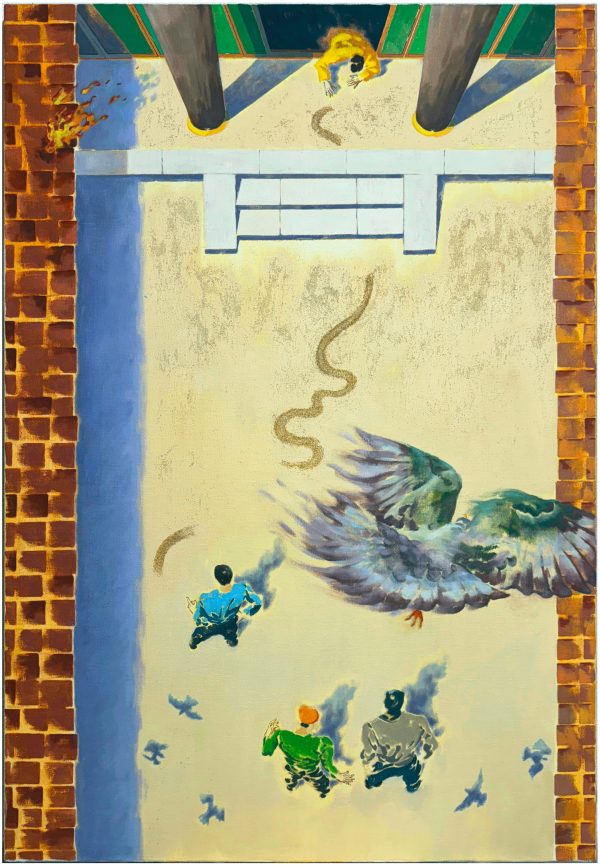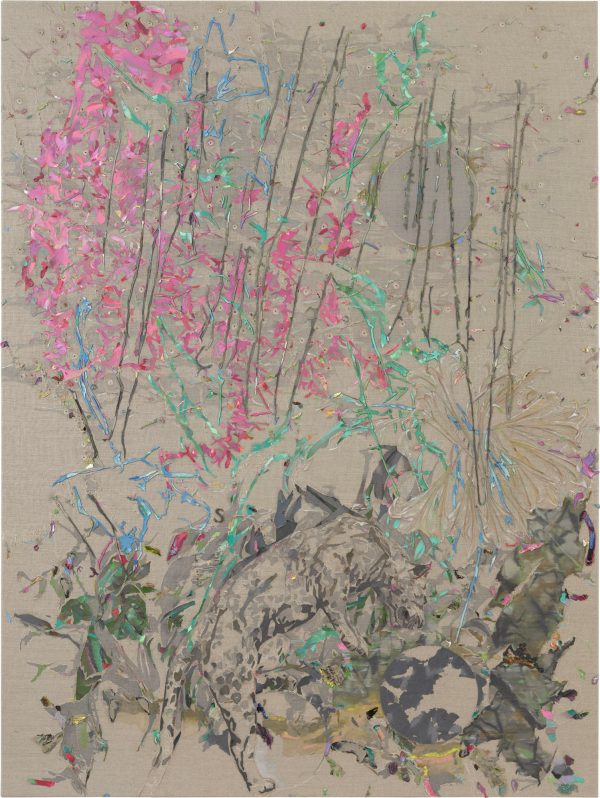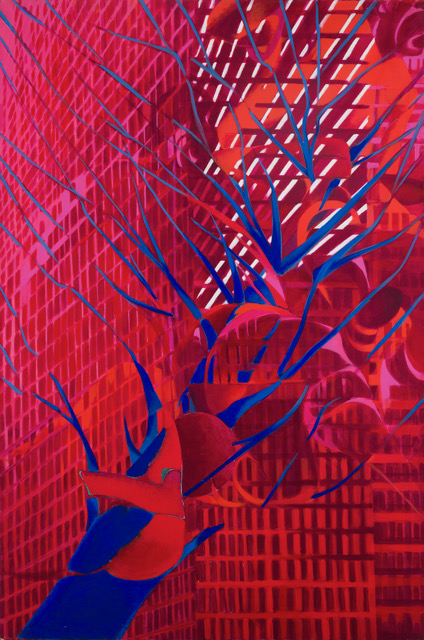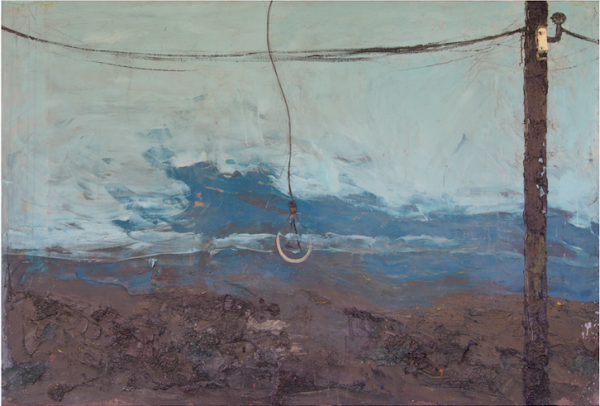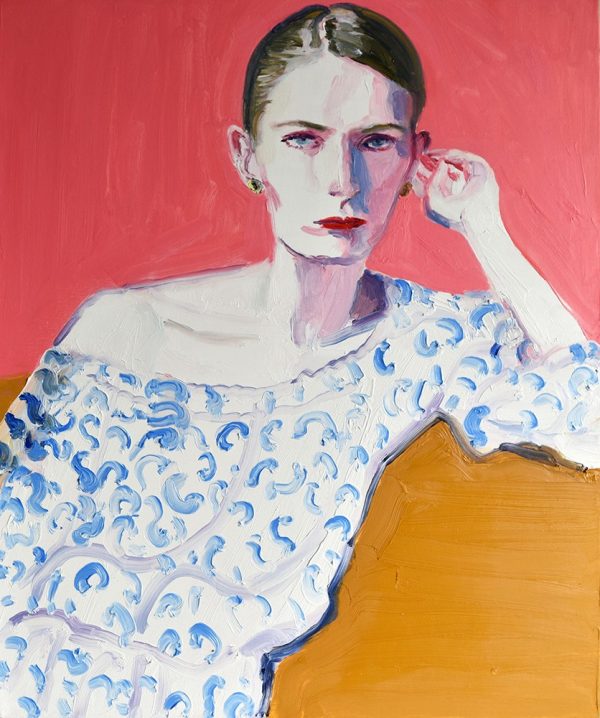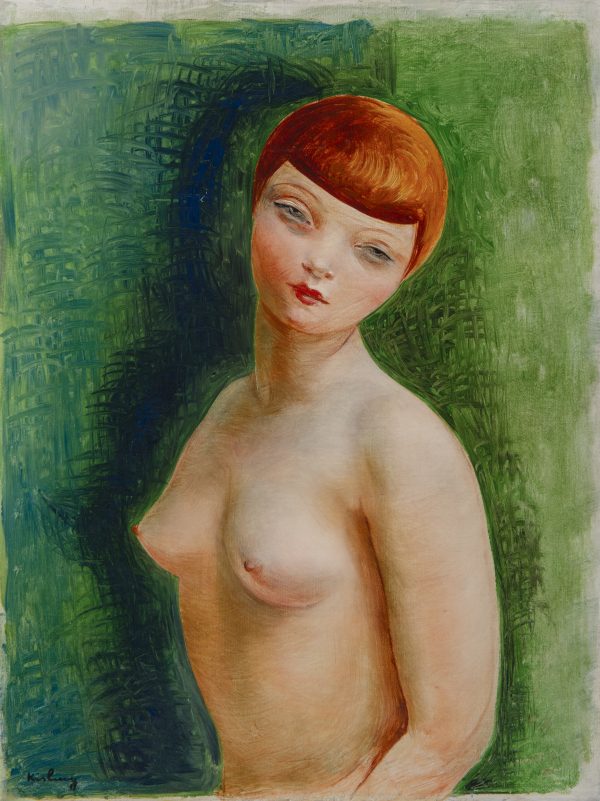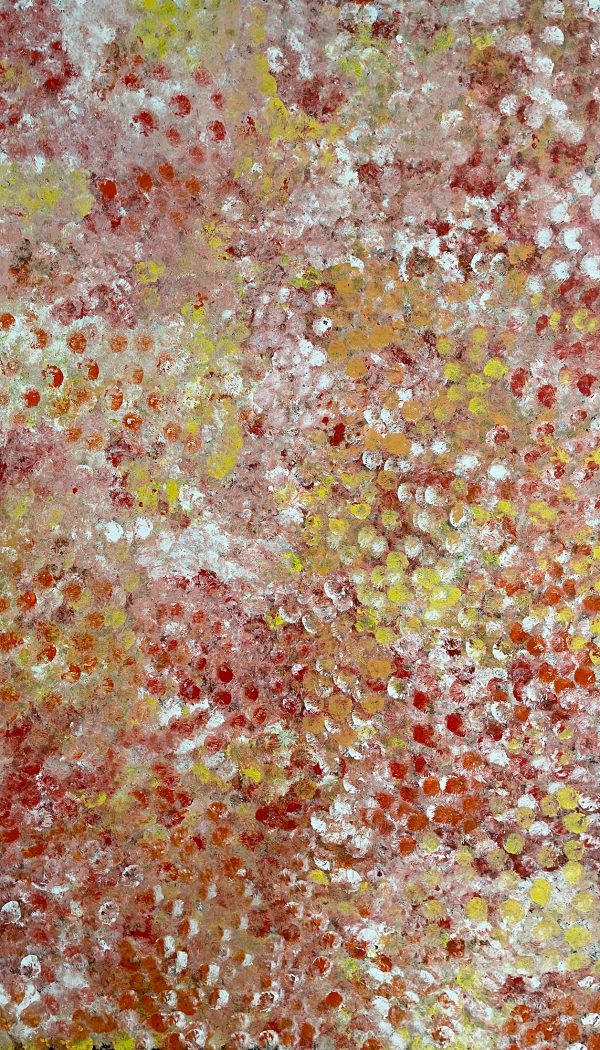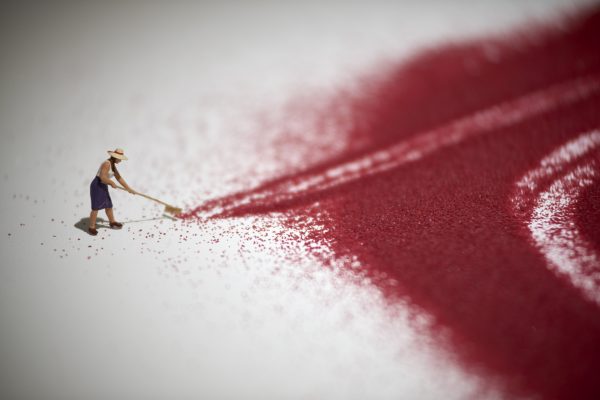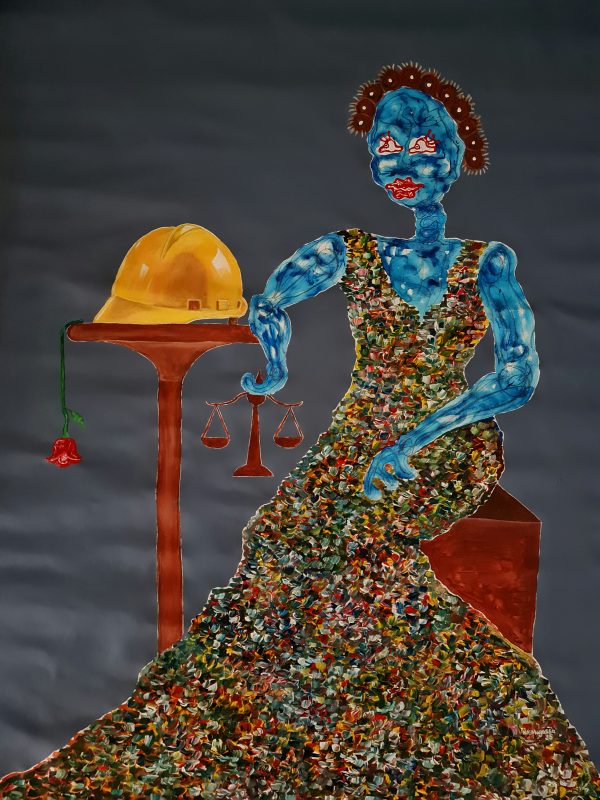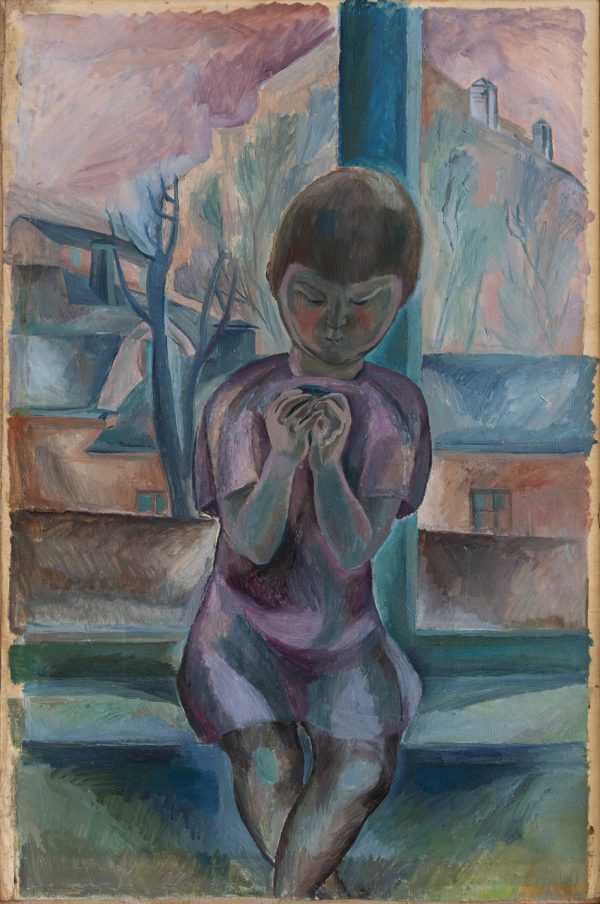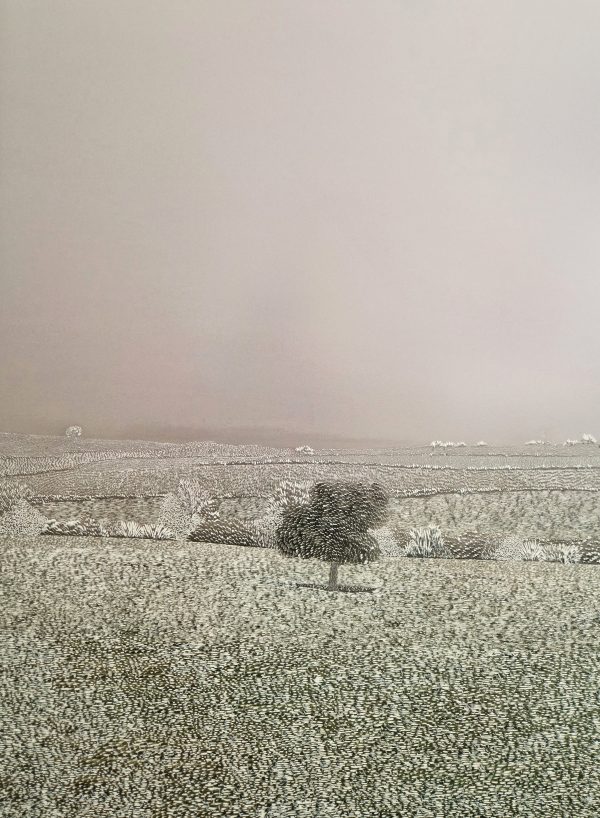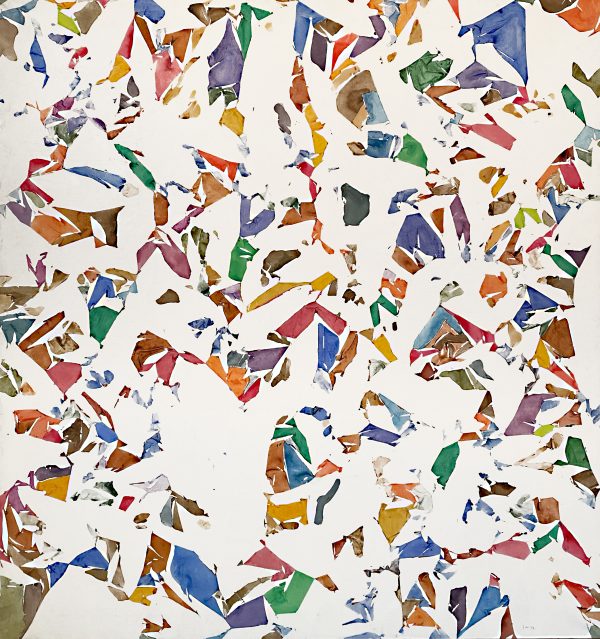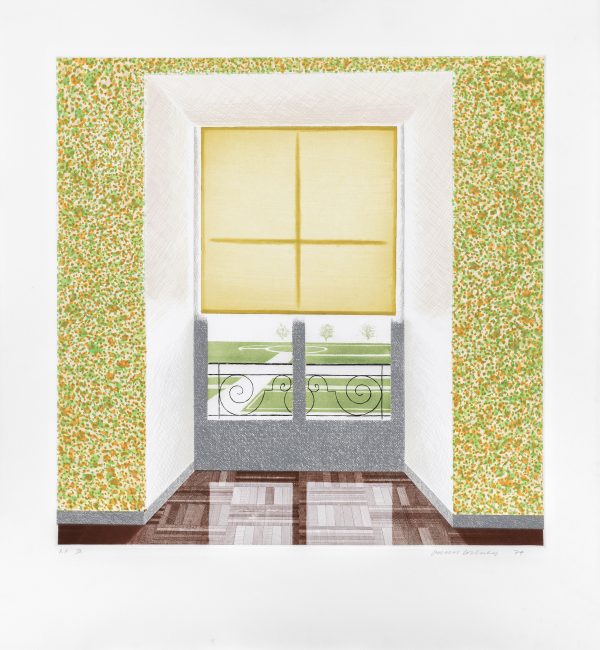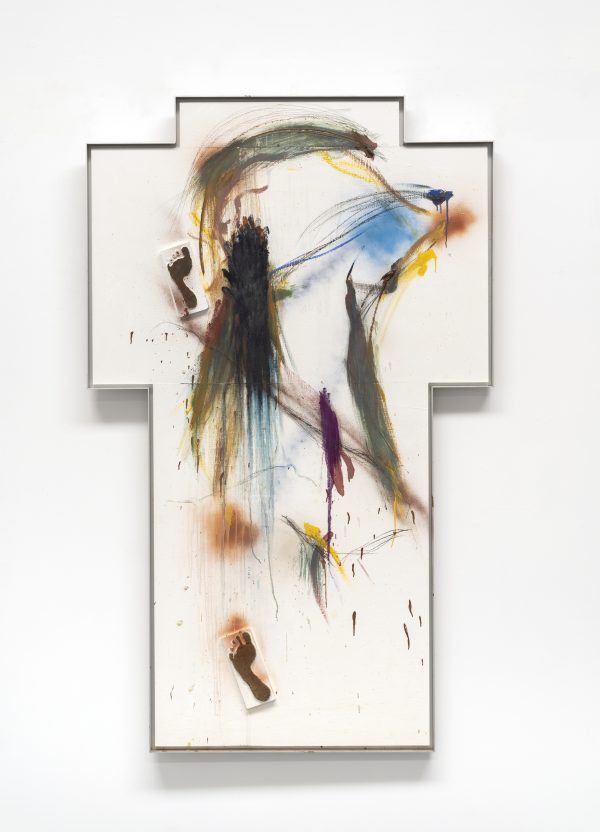Galerie Raphaël Durazzo
Titina Maselli , Italy
"Panta Rhei – Everything flows"
Titina Maselli, Calciatori e città, 1973, Acrylic on canvas
Titina Maselli is a leading figure in twentieth-century Italian art. Favoring large formats, Maselli plunges us into nights on canvas in a style that is instantly recognizable. She brilliantly depicts the movement, speed and energy that characterized her era. Her work, imbued with the Italian avant-garde, to which she feverishly added all the effervescence of the post-war years through to the Pop years, had a rightful place in the gallery’s program, which we intend to dedicate to the history of the Avant-Garde.
She was born in Rome in 1924 into a family of artists and intellectuals. Her father, a philosopher and art critic, encouraged her to paint from an early age, and it was in Rome in 1948, at the age of 24, that she exhibited her work for the first time. She was soon noticed. For the Italian writer Renzo Vespignani, her creations reflected “the passions of a generation still acerbic, but already tested by fear and despair”.
Later, Maselli painted the archetypes of her time. “I wasn’t interested in imperial Rome, I was looking for modern Rome, and I seemed to discover it at night”, she would later say of her early research. These nocturnal cities reveal what seems to her to be left of reality and what we don’t look at enough: they are criss-crossed by a geometry of lines and urban networks in which the streets awaken under the vibrant glow of neon lights and neon signs. Maselli’s modernity breaks up the landscape to the point of making nature disappear. Her Metropolis scenes feature footballers, boxers and cyclists who split the concrete more than they make their way through it.
Titina Maselli took part in the Venice Biennale four times and exhibited in several European cities. From 1952 to 1955, she lived in New York, confronting the Pop Art movement from which she wanted to differentiate herself: “These young artists want to paint the object itself. I, on the other hand, intend to paint conflicts”. In fact, she paints this conflict between man and his environment: an environment he is constantly trying to sow, to surpass, in energy, speed and even strength. She would later put this conflict at the heart of her work, designing sets for numerous films.
In the 70s, she moved to Paris, where the theater and opera houses welcomed her and made her a household name. She collaborated with major directors such as Jean Jourdheuil, Brigitte Jaques and, above all, Bernard Sobel, with whom she worked on twenty productions between 1980 and 2003, mainly designing sets and costumes: Samuel Beckett’s Va-et-vient and Pas moi (1980), Betsy Jolas’ opera Le Cyclope after Euripides (1986), Luigi Pirandello’s Les Géants de la montagne (1994). In 2003, for the Aix-en-Provence Festival, she designed the sets for Stravinsky’s Renard, directed by Grüber and conducted by Pierre Boulez.
Maselli died on February 22, 2005 at her home in Rome. Her exhibitions and retrospectives at the Rome Quadriennale, the Salons de la jeune peinture and A.R.C. in Paris, the Gulbenkian Foundation in Lisbon, the Kunstamt Kreuzberg in Berlin and the Fondation Maeght in Saint-Paul-de-Vence (1972) attest to her creative wealth.
Solo show of Titina Maselli
From April 3rd to May 31st, 2025
The gallery
After ten years working as an Art Advisor, Raphael Durazzo opened a gallery dedicated to the 20th century Avant-Gardes in Matignon/Saint-Honoré.
Raphael Durazzo aims to be the essential showcase for the great Surrealist painters, especially the women, as well the most renowned post-war artists. The gallery also presents contemporary artists in dialogue with modern artists.
The gallery cultivates particularly close links with its collectors consulting for private as well as corporate collections.
Galerie Raphael Durazzo is honoured to participate to TEFAF Maastricht 2025.
Gallery artists
Josef Albers, Joseph Beuys, André Butzer, Leonora Carrington, Le Corbusier, Christa Dichgans, Leonor Fini, Jonathan Gardner, Walter Gropius, Jörg Immendorff, Vassily Kandinsky, Anselm Kiefer, Paul Klee, Jacqueline Lamba, Fernand Léger, Nadia Léger, Markus Lüpertz, Amédée Ozenfant, A.R Penck, Sigmar Polke, Gerhard Richter, Oskar Schlemmer, Gérard Schneider, Thomas Schütte, Gunta Stölzl, Dorothea Tanning, Fritz Winter, Irène Zurkinden
